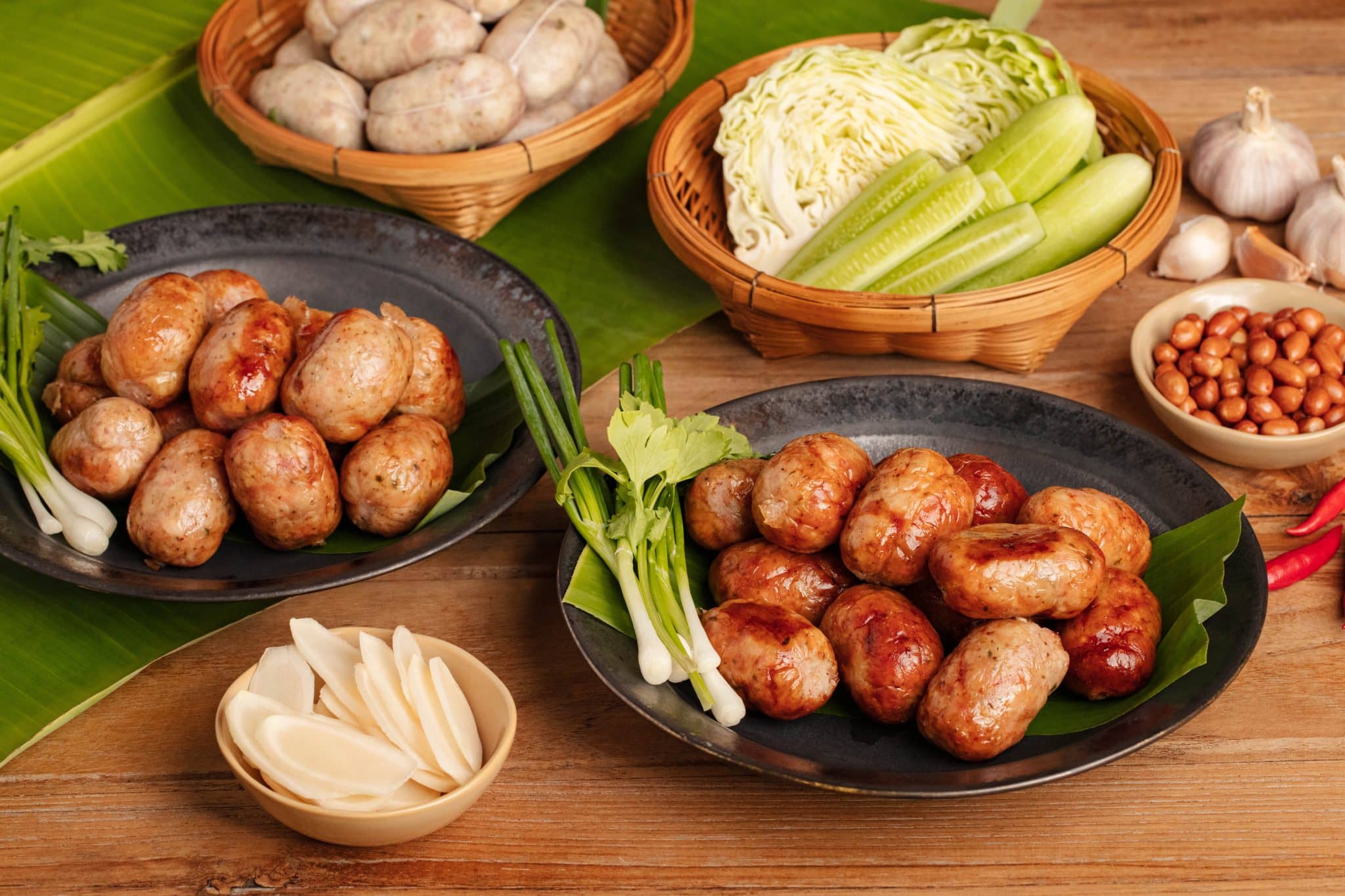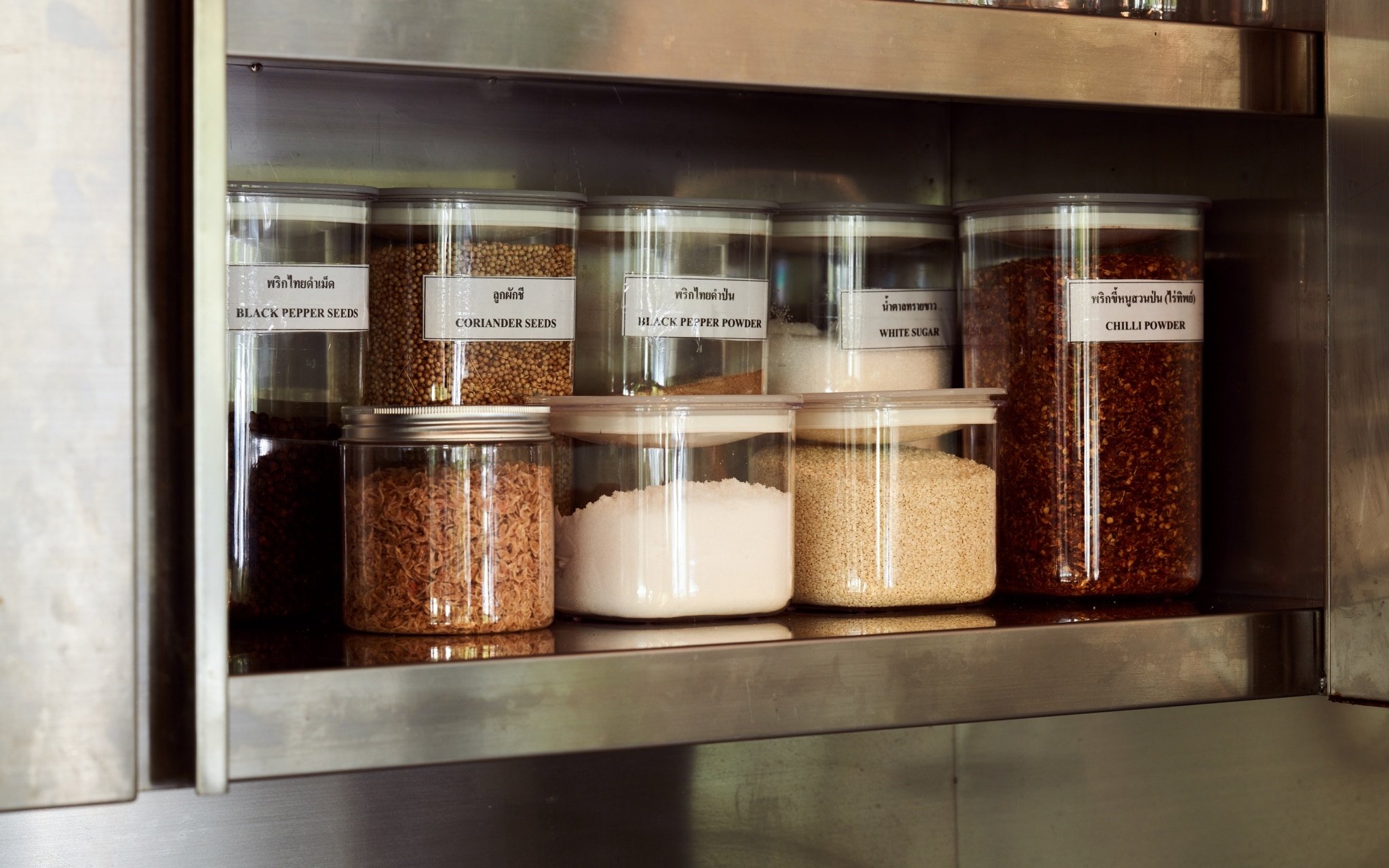Among the most popular northeastern Thai (aka ‘Isan’) foods is, unquestionably, ‘Isan sausage’ — the unique kind of sausage with savory aroma that never fails to attract passers-by, with crispy casing enfolding a soft combination of spiced minced meat and local herbs, being a heavenly all-day snack or side dish in a Thai meal. If this food is already your favorite, or if you have doubts whether it’s right for you, let’s get to know more about this Thailand’s favorite sausage.
A BIT ABOUT SAUSAGE, THE WORLD’S FAVORITE SNACK
Before we dive into the story of Isan sausage, let’s get to know more about ‘sausage’ — the internationally beloved food.

The likes of present-time sausage were actually originated in the ancient times, with studies indicating that human may have produced sausage since the pre-historic era, and it has been vastly consumed for thousands of years already. When people needed ways to preserve the scraps of meat ─ those remnants from cooking meals ─ that can be piled up enough to create some new edibles.
Interestingly, sausage has been in various food cultures across the globe, long before the globalization occurred. Without means to exchange wisdoms, people in Europe, Middle East, Asia, and Africa have created their own kinds of sausage, with minced meat and salt as the common ingredients.
Even though in present times, the most popular types of sausage go to German and Italian ones, other countries also have their own unique recipes. The Vietnamese has ‘dồi huyết’, blood sausage with herbs, and ‘giò lụa’, lean pork mixed with a bit of flour to create silky texture. The Filipino sausage is called ‘longganisa’, standing out with distinctive aroma of spices. In Korea, commonly found is ‘sundae’, Korean-style blood sausage containing vermicelli (or rice, in some areas of the country), which can be enjoyed as a snack or put into a boiling hot soup to create ‘sundaeguk’. Here in Thailand, there are Northern-style sausage called ‘sai aua’ and Northeastern-style one call ‘Isan sausage’ ─ the one that we will go further into details ─ which are consumed and beloved in all parts of Thailand, especially the latter one, simply because it tastes uniquely delicious.
‘ISAN SAUSAGE’ THE ANCIENT WISDOM OF FOOD PRESERVATION

There are various stories on the origins of the Isan sausage ─ some say that it is originated from certain festivals, where many cows were killed for their meat, and people attempted to preserve scraps of meat to be consumed later on; others say that it was a group of nomadic hunters who pioneered the recipe, in order to preserve their hard-earned foods, so they wouldn’t go bad during the journey back home. Nevertheless, it all comes to the need to preserve meats to be safe for consumption or a lengthy period of time.
Definitely, there were neither food industry nor preservative back then, so how local folks could invent such ways to effectively preserve their food is completely praiseworthy, alongside creating one-off salty-and-sour deliciousness with refreshing aroma of herbs.
WHAT’S IN ISAN SAUSAGE?

Traditionally, the main ingredient of Isan sausage is ground (or finely minced) fatty meat, could be either pork or beef, to be mixed with chopped garlic, rice, and some salt. Some may add more ingredients like vermicelli a variety of herbs to enhance the taste. Once the mixture is set, it will be stuffed into a casing (animal intestine), bound into round pieces, and dried in the sun for some time. Then, just let time help with fermentation to create savory sourness.
THE ALMOST-IDENTICAL TWIN OF ISAN SAUSAGE
If you have ever been to any of Northeastern Thai provinces, you may have seen a type of sausage that resemble Isan sausage, only with a bit darker color. That is called ‘mhum’ ─ the almost-identical twin of Isan sausage, but significantly different in their tastes.

While common Isan sausage contains fatty meat, mhum is comprised of ground lean meat, still could be either pork or beef, with chopped offal to make the sausage tender. As a result, mhum tastes slighter more bitter with subtle smell of offal. If you are up for a more adventurous version of Isan sausage, then go for it!
‘ISAN SAUSAGE’ AN UNHEALTHY PROCESSED FOOD?

It’s inevitable that people label ‘sausages’ as highly processed foods, which is not health-friendly. Undeniably, Isan sausage is processed, but the main process is natural fermentation ─ there’s noteworthy difference between producing Isan sausage and those produced in big factories, where additives are more heavily used. To clarify: homemade kimchi is also a processed food, but the process occurs naturally from chemical reactions, and no additives are required to make it tasty. The Isan sausage can be produced this way as well.
Restaurants, small or big producers, or households can actually produce their own Isan sausage without needing to add preservatives, because fermentation is already the heart of the creation of this food ─ fermentation helps adding pleasant flavors while lengthening its shelf life concurrently. However, it’s still important that the sausage is stored in a proper place for it not to go bad too soon, just like every kind of foods.
THE SNACK WITH HEALTH BENEFITS

Isan sausage is a good choice for your afternoon food craving, because not only it tastes nice, but it can also offer you various nutrients ─ it can be said that this kind of snack is not just empty calories. Apparently, its main ingredient is rich in protein, and it contains healthful herbs. Besides, it is always paired with fresh veggies.


